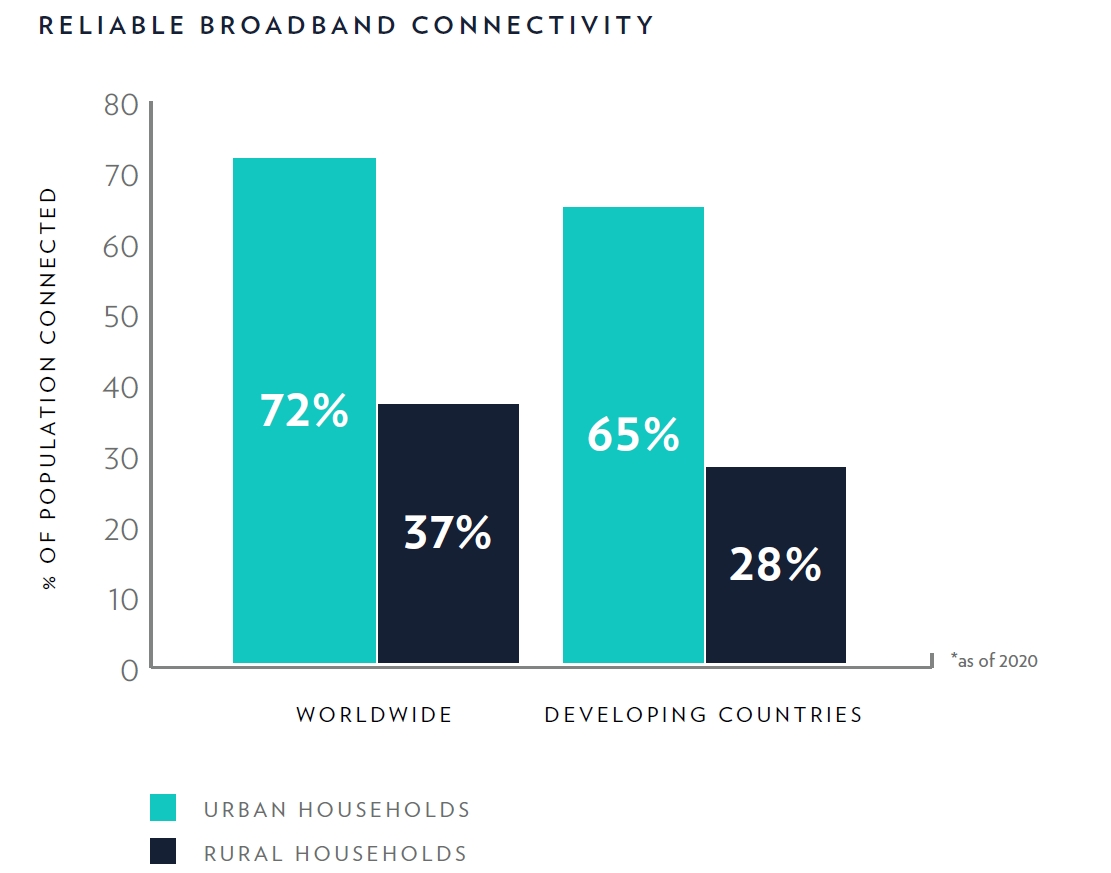Industry Thought Leadership
The New Economics Of Cellular Backhaul
March, 2022Fast, reliable, and aordable broadband internet access provides numerous societal and cultural benefits including improved economic opportunities, better access to health, education, and government services, nearly unlimited entertainment options, and much more.
Nearly four billion people worldwide still do not have reliable access to broadband internet, and despite the heroic upgrades made by network providers over the past few years, just 50 percent of worldwide mobile connections used 4G as of 2020. Only 72 percent of urban households and 37 percent of rural households across the world have broadband access at home, and in developing countries, these numbers are even lower (65 percent and 28 percent, respectively).
Technological advancements have made building a cell site easier and cheaper than ever before, but the cost of connecting those towers to the core network can be prohibitively high, given the cost of running fiber to each cell tower. If nothing can be done to reduce the price of middle-mile broadband connectivity, the rural and remote world will remain unconnected.

Traditionally, satellite connectivity wasn’t even considered for cellular backhaul given its high costs — but times have changed. Now, thanks to several proprietary technical innovations, small and low-cost MicroGEO communications satellites from Astranis can dramatically reduce the cost of bandwidth. This is possible because MicroGEO satellites are purpose-built to target bandwidth into a specific geographic region, like the state of Alaska, or a medium-sized country like Peru.
With a MicroGEO satellite, operators get the bandwidth they need, right where they need it. This compact form factor is perfect for piloting new markets and market segments, and additional MicroGEO satellites can increase capacity to meet demand once the business case has been proven out.
For illustrative purposes, consider an actual case study of an anonymous cellular backhaul service provider we’ll call CBH. In this example we are using order-of-magnitude data based on real customer conversations. Before selecting Astranis MicroGEO, CBH served 150 cell sites and their operating cost structure was dominated by the high price of bandwidth. CBH amortized capex for new site bringup over an eight-year period, and bandwidth leasing fees represented over 70 percent of total monthly costs. This limited CBH’s growth — it didn’t justify a risky, high-opex strategy, so CBH couldn’t expand the number of sites that they cover.
By switching to MicroGEO, CBH was able to secure middle-mile bandwidth at a more than 75 percent discount compared to their legacy coverage. Making the switch to lease a dedicated MicroGEO satellite from Astranis allowed CBH to expand to over 600 sites without increasing opex.
This translates to over 200 percent top-line revenue growth and a 360 percent increase in monthly profit, resulting in an extended footprint reaching an additional 60,000 new wireless users while maintaining a lower cost per site.
MicroGEO oers a compelling price point and business model that has caused telcos and internet service providers to reconsider their stance towards satellite backhaul.
Legacy satellite bandwidth is expensive, undermining the business case for expanding coverage into rural and remote locations. With Astranis, a new era is here: not only can service providers enable cellular backhaul at an aordable price, they can do so with custom-built MicroGEO satellites dedicated to their business success.

